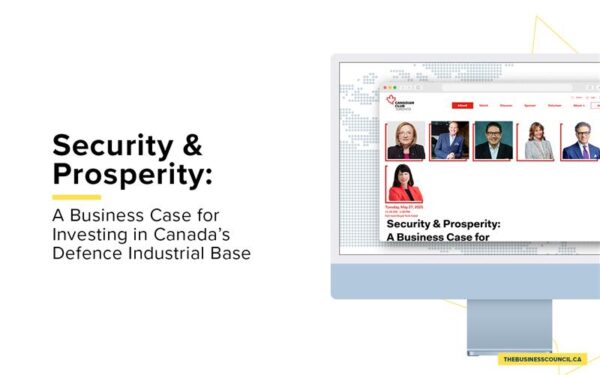We’re beating back COVID. It’s time to focus on our future.
As published on LinkedIn
If the summer of 2020 was a time of pandemic-inspired fear and uncertainty, the summer of 2021 is, for many Canadians, one of hope and optimism.
A year ago, few imagined that the first COVID-19 vaccines would arrive in Canada before the end of 2020. But thanks to a remarkable degree of collaboration among governments, business, scientists and healthcare workers, safe and effective vaccines were developed, approved and delivered in record time. And thanks to the willingness of Canadians to roll up their sleeves, we are well on the way to achieving population immunity from the coronavirus.
The success of the vaccination campaign, and the resulting decline in new COVID-19 cases in Canada, makes it possible to do something we haven’t done enough of lately: plan for the future.
As restrictions ease across the country, individual Canadians can finally make plans beyond next week. We can start making arrangements to reunite with friends and family. Students can look forward to returning to the classroom. We can make plans to travel across the country or beyond our borders.
By the same token, policymakers need to focus their attention on Canada’s long-term economic future.
As the pandemic subsides, we can expect a short-term boost to Canada’s GDP. It will be fuelled by the extraordinary stimulus the federal government has pumped into the economy over the past 16 months, pent-up consumer demand, and savings accumulated by many during the pandemic.
But what happens once that post-lockdown “sugar rush” ends? This year’s federal budget forecasts a return to two percent GDP growth by 2023. Some economists label it the two percent trap, warning it can lead to stagnating employment, wages and living standards. The economic challenges that held us back before the pandemic – including an aging workforce, an economy that imports more goods and services than it produces, and a business investment climate that lags other major advanced economies – have not gone away. Indeed, the challenges are now even greater in light of the massive increase in government deficits and debt.
These are serious problems and overcoming them will require an economic strategy that is smart, comprehensive and above all ambitious.
Other countries have recognized their own need for a long-term economic plan and have shared their visions over the past few months. The U.K. government’s Plan for Growth focuses economic recovery on three key pillars: infrastructure, skills and innovation. U.S. President Joe Biden’s “Build Back Better” agenda includes a commitment to forge a “21st century American industrial strategy”. Germany has its Recovery and Resilience Plan, Japan has a Green Growth Strategy.
How can Canada use this moment to develop a long-term, sustainable and inclusive strategy for economic growth?
We can start by reminding ourselves of one of the key lessons from COVID-19: we are much stronger when we cooperate to achieve common goals. Governments, employers, labour organizations, non-profit groups and a wide range of other interests worked together during the health crisis to support hard-hit communities and people. We need to harness a similar spirit of partnership as we rebuild.
The good news is, we already know much of what needs to be done. Six months ago the federal government’s Industry Strategy Council provided a blueprint with a series of recommendations to “restart, recover and reimagine prosperity for all Canadians.”
Here at the Business Council of Canada, we have sketched out our own roadmap in two recent reports: Powering a Strong Recovery and Clean Growth 3.0. We believe Canadians need and deserve a focused, intentional and sustainable growth strategy built on four main pillars:
- People – investing in and enhancing Canada’s human capital by ensuring good jobs for everyone who wants one.
- Capital – building a more resilient economy by attracting investment, nurturing new ventures, and creating an environment that encourages existing businesses to expand.
- Ideas – championing and harnessing made-in-Canada research and know-how.
- Sustainability – forging a close partnership between the public and the private sector to ensure Canada meets or exceeds its climate commitments.
We don’t pretend to have all the answers, which is why we are actively working with others to develop consensus on the path forward.
If, as many expect, a federal election is called later this summer, I hope all political parties will clearly articulate their economic growth strategies and put them front and centre in their platforms.
Now is the time to talk about the kind of future we want for our country and how we are going to achieve it.
In my next article, I’ll expand on why people are the foundation of our country’s economic success … and what we can do to enhance Canada’s human capital.











